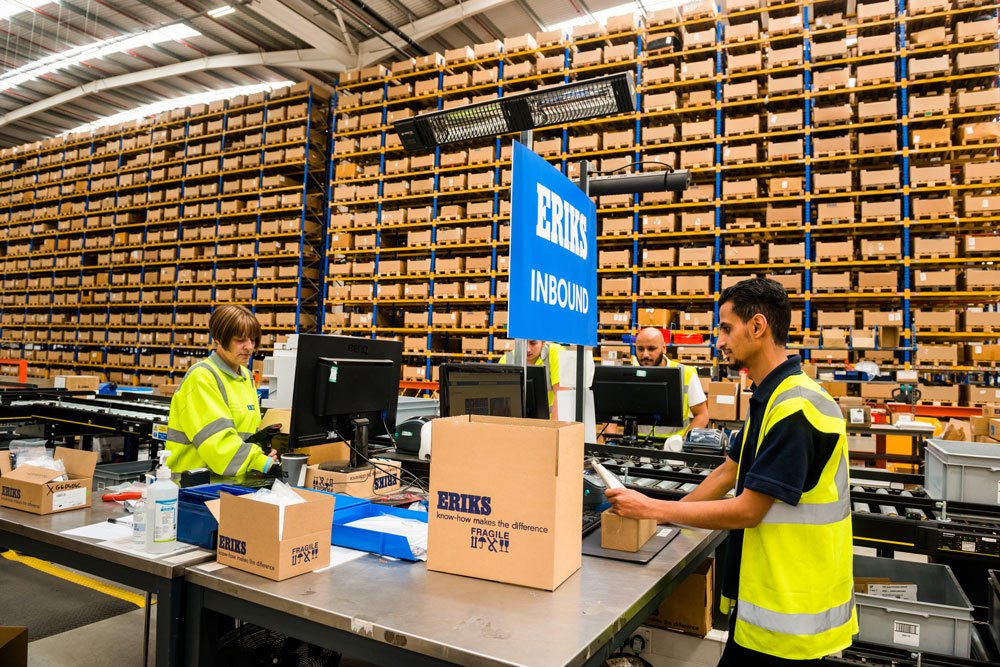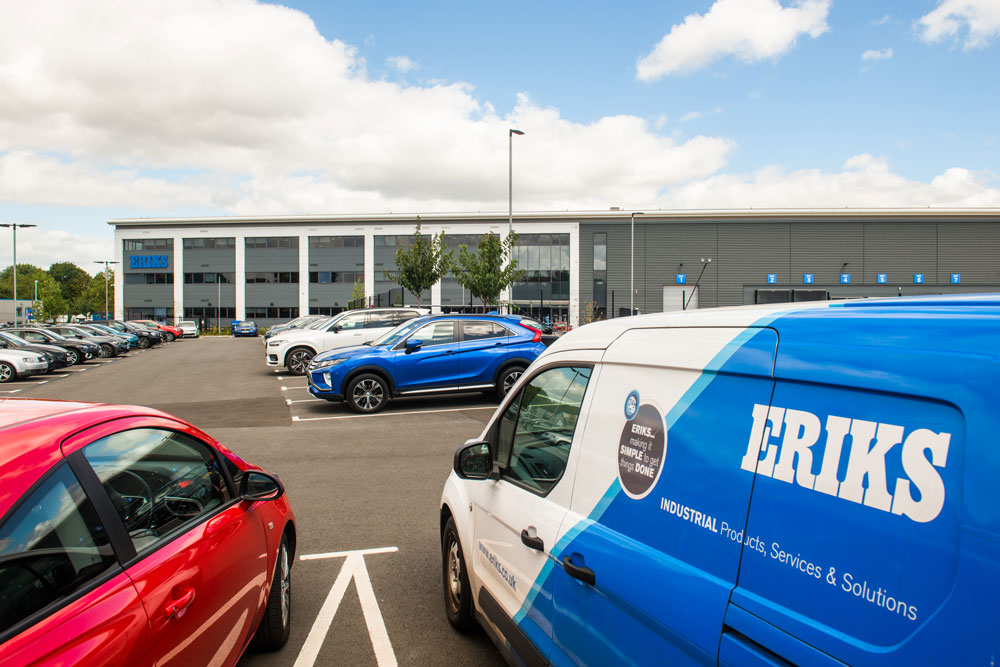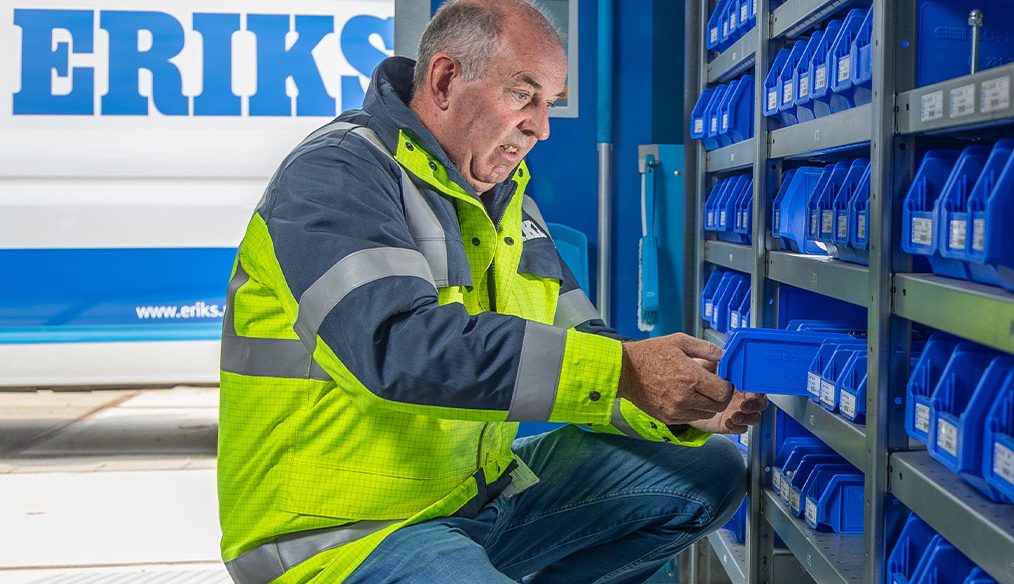In this article
Navigating the Maze: Overcoming the new Engineering Supply Chain Challenges
There has never been a time when supply chain or product availability issues have caused so many problems for manufacturers and engineering businesses of all types. The ‘perfect storm’ of Brexit, the COVID-19 pandemic plus the conflict in Ukraine mean that it’s one of the highest priorities on the agenda of boardrooms across the UK and Ireland. In this article Paul Lynch of ERIKS discusses the ‘new normal’ in the Maintenance, Repair and Operational products supply chain and offers advice for the future.

One of the first reactions to the supply chain and availability challenges which firstly Brexit and then the COVID-19 pandemic produced was ‘the race to buy’ whereby manufacturers, completely counter to the philosophies they had been following for years, bought in more goods than they immediately needed to protect themselves from envisaged shortages. This move from a ‘Just In Time’ philosophy to a ‘Just In Case’ approach continues to be seen as new data has revealed that manufacturers are holding double the amount of stock compared to pre-pandemic levels.
Data from The Manufacturers Health Check Report 2022* showed businesses have stockpiled goods to mitigate against delays and shortages. Overall, stock levels for manufacturers in the UK jumped by 99.7%, from an average of £365,736 in Q3 2019 to £730,681 in Q3 2022.
Amid all this turmoil there has been much talk about the pros and cons of various supply chain models be that nearshoring, farshoring, offshoring or reshoring! Plus, there has simultaneously been a huge change, super-charged by COVID, in expectations around the way people shop with the Amazon-type experience completely changing the business to consumer and retail landscape which has undoubtedly filtered down into business-to-business expectations.
For ERIKS the challenges COVID introduced didn’t so much herald a re-think about how we serve our customers, but they certainly influenced the building of the new £22 million Fulfilment Centre of Expertise (FCE) in Oldbury in terms of its scale and digital automation capability. The advantages of Central Stocking versus Local Stocking are well known.
First is the ability to hold a much larger range of products centrally. ERIKS’ FCE in Oldbury has 50,000 items that can be dispatched within one hour and more than 250,000 products on next day delivery. This huge range provides manufacturers with excellent supply chain redundancy as like-for-like products can be sourced and dispatched quickly if the specified product isn’t available.

Secondly, the turnover of products in a centralized facility is much faster, ensuring that stock is ‘factory fresh’ and in perfect condition, as opposed to having been sitting on a shelf in sub-optimal conditions for many years. Same-day delivery is possible with the centralized model and the basic standard is next day delivery before 9:30am with no fuss returns and deliveries in sustainable packaging. All of these are of great advantage to a manufacturer’s engineering or maintenance team. Data also supports the centralized philosophy as during the COVID pandemic ERIKS saw the number of visits to its branches plummet. These numbers have never recovered and have permanently moved to contact by phone, email, or SKYPE/TEAMS.
Despite the digital changes that everyone experienced due to the lockdown the central supply model has taken some getting used to amongst both our customers and our staff as they were still drawn back to the comfort of previous habits and what we call ‘The supply chain myth of local stocks’. It turns out, and this should come as no surprise given the increase in the amount of stock that UK manufacturers are now holding, that fear is a big motivating factor in the engineering parts supply world. Engineers have become used to the feeling of comfort of having a nearby ‘trade counter’ with racks of dusty boxes sitting on the shelves and have been loath to give it up, even though the usefulness of such a facility is something of a mirage that does not stand up to much scrutiny (when data is analysed around ‘on spec ‘engineer visits and locally stocked parts availability).
But there has, over this period, been a seismic shift in the way our customers operate. Manufacturers now keep the ‘showstoppers’ on the shelf so that if a crucial part fails, they can become operational again very quickly and are not reliant on “local stockists” that seldom have the right part on the shelf. We are now receiving the back-fill order for that stock which can be delivered the next day. However, this solution is not quite as simple as it sounds. While it is great that customers are now focusing on recognizing their critical items and ensuring they are stocking them, this also requires insight into the supply chain, which has been a perennial problem for OEMs and manufacturers.
In an ERIKS White Paper entitled Is the manufacturing supply chain broken?** This point was outlined, the paper stated, “One of the major challenges for OEMs and manufacturers at the head of the supply chain is having visibility of all companies and processes that contribute to their supply chains. In sectors such as automotive, white goods, medical and aerospace, for example, OEMs are generally closely linked only to their Tier 1 suppliers.
“Beyond this, in Tier 2, 3 and the world of subcontractors and parts suppliers, it’s extremely unlikely for them to know what is going on or to have advance notice of developing problems that might cause a major disruption in supply. Companies with limited supply chain visibility are generally unable to react quickly to sudden changes in their marketplace or to adapt to a failure in downstream supply conditions. As a result, they will attempt to protect themselves in various ways; for example, by holding high levels of stock.”
A survey carried out by ERIKS in conjunction with the Institute of Engineering and Technology (IET) found that companies struggled to maintain a balance between holding excessive stocks and inventories that were so lean that production engineers had to take on the role of the purchasing department and source additional parts themselves as they couldn’t get them from their own company’s stores. An activity that is a waste of time, resources and expertise.
By comparison, companies that have robust strategies for managing supply chain risk and business continuity are far better placed to respond to sudden changes in demand or operating conditions. These companies have typically diversified their supply chains, reducing their dependence on a small number of countries or suppliers, with a model that allows them to switch quickly between regions or suppliers of critical parts. While this problem affects OEMs and Manufacturers greatly, can we really expect them to have deep insight into the supply chain, after all it’s not their core business? Increasingly the emphasis is now being placed on supply chain experts like ERIKS to work alongside their customers to ensure they are resilient to supply chain fluctuations.
Although we can’t predict global pandemics or adverse weather events, we have for some time anticipated and planned for what are called Black Swan events***, which might cause significant disruption to supply chains. As a result, we’ve developed a robust and flexible business model that allows us to respond quickly to both short and long-term changes in market demand. For example, for standard products we have multiple sourcing agreements in place with manufacturers around the world; we also hold buffer stocks of all our customers’ critical components. For specific technologies such as seals and gaskets, we have local manufacturing centres that are capable of rapidly producing standard and bespoke parts in low and medium volumes. In this way we not only give our customers insight into where they are potentially vulnerable, but we help them put in place a solution also.
Ultimately, large OEMs and manufacturers have, as far as Maintenance, Repair and Operational (MRO) products are concerned, decided to outsource their supply chain headaches entirely. Post-pandemic we have seen an upturn in the number of manufacturers wanting to outsource their MRO/ engineering stores management entirely and we call this an OnSite solution. Without going into too much depth this involves an expert stores management and supply chain team working directly on the customer’s site (which additionally also brings technical knowledge to help address a wide cross-section of manufacturing challenges whether relating to supply, production or development of the process). If we think about the way Spotify has disrupted the music industry or uber the taxi/ automotive sector, then the As-A-Service approach to supply chain is a modern solution that addresses the latest problems.
The forces affecting OEMs and manufacturers in relation to their MRO supply chain are some of the most powerful and least controllable that they are exposed to. Their response to this, as we have seen, continues to be over-stocking - but this brings with it multiple problems ranging from excessive capital tied up in stock to product obsolescence over time (resulting in large stock write-offs). The solution involves shaking off the ‘comfort blanket’ of the local trade counter and trusting in digital replenishment plus gaining a real insight into the MRO/ engineering stores, understanding what equipment is crucial to production and what the supply chain around that looks like. Or, as users of Spotify and uber have done for years now, simply leave all that thinking to someone else and just focus on production.
References:
* Manufacturers Health Check Report 2022
** Is the manufacturing supply chain broken?
*** Characterized by mathematician Nassim Nicholas Taleb as an event with three aspects: it is outside the realm of regular expectations, as nothing in the past can convincingly point to its possibility; it has an extreme impact; and it allows us to find reasons for its occurrence after the event, making it explainable and predictable.
Are your stores keeping you awake at night?

ERIKS supply chain and inventory knowhow can help release time and capital caught up in your indirect or maintenance, repair and operations OnSite supply chain.
For more information, get in touch with your local ERIKS Service Centre who will be happy to discuss your options.
#ERIKS #LetsMakeIndustryWorkBetter #MRO #OnSiteSolutions #SupplyChain #Procurement

